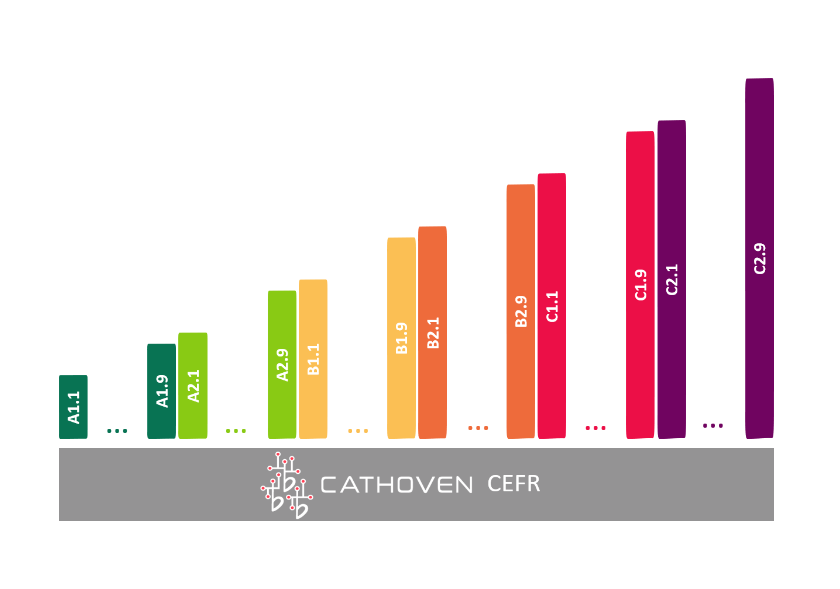How to Make Your Content Learner-Friendly
When we think about grading language, we often think in terms of preparing materials for language classes. But that’s not the only time we need to communicate with our students.
Before they become students, they first need to be convinced by a teacher or school’s marketing. And the only way that can happen is if the language is targeted at the right level.
In this article, I explain why you should adapt your content to language learners and how Cathoven can help.
The Importance of Readability in Marketing
Studies show that web users have an attention span of around eight seconds. That presents a huge challenge to anyone writing content for the web. Because if our writing isn’t immediately clear and engaging, people will click away.
That’s why the most effective copy uses plain language. That is, short sentences, simple tenses and everyday vocabulary. The easier it is to understand, the more likely people are to read (and enjoy) it.
Readability tools like Hemingway Editor or the Cathoven Readability Analyzer can help writers achieve this level of clarity. They analyse factors like sentence length and structure and word complexity to determine how easy the content is to read.
Tools provide a readability score, which in most cases aligns with the US grading system. They show the average reading level required to understand the text.
It’s generally advised to aim for a 5th – 7th grade readability score when writing for the web. That’s because this is the average reading level for American adults. Copy at a higher level than this likely requires the reader to concentrate more – which no one wants to do. Especially not when trying to make a purchasing decision.
There’s no doubt that these tools are a great help for sharpening our writing. The problem is, they calculate scores based on native English speakers’ reading abilities.
What about language learners?
They face a unique set of challenges when reading in a second language that deserve to be addressed.
Making Our Language Accessible for Learners
Over 1.1 million people speak English as a second language. 3.5 billion Google searches happen every day. And 60% of webpages are written in English.
So, it’s likely that thousands of people are searching in their second language every day. This is especially true of English learners looking for online lessons.
It’s also likely that much of this content is confusing to learners. Because readability tools can help ensure your copy is clear. But they can’t help you grade your language.
So, even if a web page has a good readability score, it may still include several words a student hasn’t yet learnt.
Take this sentence, for example:
We use an immersive approach, allowing you to become fluent in English as soon as possible.
It has a readability score of Grade 8. That means it should be easily understood by the average American adult.
But that doesn’t mean it’s easy for a learner to understand. In fact, the Cathoven CEFR Checker, shows that this sentence demands a B2.7* level of understanding:

In this example, the verb forms used demand an A1 level and the adverbial clause demands a B1 level. But the use of words like ‘immersive’ and ‘approach’ pull the average vocabulary grade up to a C1.9 level.
This makes the whole sentence far too complex for an A2-level learner.
Without manually checking the level of every word, clause and verb form, it would be difficult to assess the overall level of our writing. But Cathoven allows us to easily decide which elements of the sentence to change.
If this sentence were targeting A2 level students, we’d want to simplify the vocabulary used:

By removing the adverbial clause, we can adapt the message to the right level without losing meaning.

*Cathoven splits the traditional CEFR levels into 10 extra segments per level, addressing the issue of huge difficulty gaps within the same level. Teachers can use their knowledge of their students to determine where they sit on the scale and which words and clauses are appropriate.
What Happens If We Don’t Adapt Our Copy?
It’s simple. If the content is too complicated, students won’t try to decipher your message. They’ll leave the page in search of another teacher whose website they can understand.
That’s why it’s so important to consider the level of the language you’re using in your marketing. Is it suitable for your target students at their current level? Not the one you help them reach. After all, your marketing shouldn’t challenge their language level; your classes should.
The Easy Way to Adapt Your Language to Different Levels
As a language teacher, you likely know which grammar structures and vocabulary belong to each CEFR level.
But it doesn’t matter how well-versed you are in the syllabus. It’s hard to keep track of every word, clause and tense when you’re focusing on writing a persuasive message.
That’s where Cathoven’s CEFR checker can help.
By entering your website, email, or social media copy into the text analyzer, you can check its grade. Then, you can use your expertise or the Level Adaptor to adjust the level of the text to suit your students.
Doing so won’t just make their reading experience easier. It will also increase the amount of time they spend engaging with your content.
Do you want to try the tool? Sign up for a 10-day free trial
